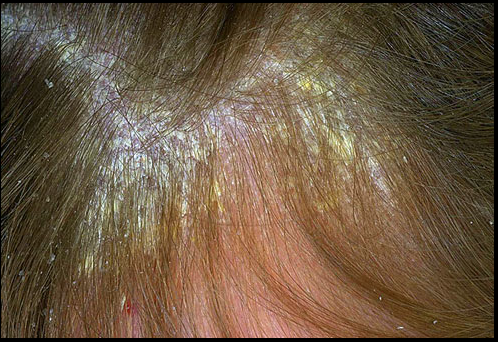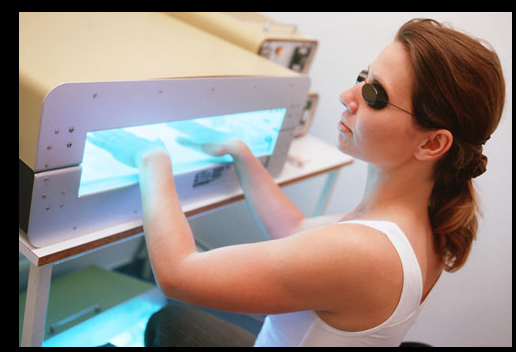Face Psoriasis
Psoriasis causes areas of dry, red, flaky skin called psoriatic plaques. These lesions can be found on many parts of the body, including the face, hairline, and scalp. Plaques are itchy and can be painful.
Nearly 90% of people with psoriasis have plaque psoriasis.
How Severe Is My Psoriasis?
When psoriasis is severe, it can grow and spread over large areas of the body. Many doctors gauge how severe psoriasis is, in part, by how much of your body it covers.
- Severe -- more than 10% of the body
- Moderate -- from 3% to 10%
- Mild -- less than 3%
Plaque Redness
With psoriasis, skin cells multiply rapidly -- up to 10 times faster than normal. The buildup of dead skin cells forms dry, scaly, and itchy plaques. How red, thick, and scaly psoriasis patches are also plays a part in judging severity.
When severe, psoriasis lesions can also crack and bleed.
Itching and Pain
Sleeping, dressing, moving, and other everyday activities can be difficult with psoriasis.
Intense itching from psoriasis can be distracting and debilitating. Sometimes, plaques become painful, keeping people from working and doing the activities they enjoy.
Psoriasis's influence on everyday activities also plays a role in determining severity.
Dandruff and Scalp Psoriasis
Psoriasis can cause crusting on the scalp and a silvery sheen. White powdery or thick dry flakes are also common. About half of people with psoriasis have scalp symptoms.
Over-the-counter medicated shampoo that contains ketoconazole, tar, pyrithione zinc, selenium sulfide, or salicylic acid may help. If not, see your doctor.
Plaque Psoriasis: Elbows and Knees
Doctors aren't sure why, but elbows and knees are one of the most common places for plaques. Though the cause of psoriasis is unknown, it's thought to be caused by genetics, as well as environmental factors and immune system problems. Coming into contact with skin irritants like metals or fragrances can trigger flares.
Plaque Psoriasis: Ears
Scales and flakiness build up on the outside of the ear and the outer ear canal. Temporary hearing loss can be caused by the buildup.
See a doctor for removal to avoid ear drum damage. Prescription drops and ointment can help treat ear psoriasis.
Pustular Psoriasis
Widespread, pus-filled blisters called pustules can form on psoriasis plaques. These flare-ups sometimes occur when a person ends corticosteroid use, gets an infection, or becomes pregnant.
A form of pustular psoriasis called Von Zumbusch can occur suddenly. If you also have fever, chills, or dehydration, seek medical attention immediately.
Pustular Psoriasis: Palmar-Plantar
Pencil eraser-sized pustules form on fleshy parts of hands or feet. They start out yellow, then turn brown, peel, crust, shrink, and fade. This type of psoriasis can happen alone or with other forms.
Hand or foot psoriasis is often considered severe because it can be debilitating and painful.
Nail Psoriasis
Flaky, splitting nails are common, especially in severe psoriasis. Nails can turn yellowish and peel away from the nail bed. In some cases, skin can build up under the nail.
Nail psoriasis can cause tiny pits in nails, as well as translucent, yellow-red discoloration that resembles a drop of oil beneath the nail.
Inverse Psoriasis
Inverse psoriasis is shiny and smooth, without silvery scales. It's usually found in areas such as the armpits and under breasts, and in skin folds of the groin, genital areas, and buttocks.
Inverse psoriasis is more troublesome in people who are overweight or who have deep skin folds. Sweat and friction tend to make the condition worse.
Guttate Psoriasis
Children and young adults are more likely to get guttate psoriasis. Small red spots the size and shape of raindrops cover large areas of the body.
Sores come on suddenly on the trunk, arms, and scalp. Strep throat infection, tonsillitis, colds, and upper respiratory infection may trigger outbreaks.
Fixing Moderate to Severe Psoriasis
There is no cure at this time, only treatments.
The good news: With treatment, even people with severe psoriasis can get relief during flare-ups in about 85% to 90% of cases.
Click on the next slide to see treatments.
Treatment: Ointments and Lotion
Thick, over-the-counter ointments and lotions with emollients may help soften and soothe dry skin.
Your doctor may also prescribe topical treatments made with tar, corticosteroids, vitamin D compounds, or retinoids.
For more severe psoriasis, doctors may move to stronger treatments, which also carry greater side effect risks.
Light or Phototherapy
Skin is exposed to ultraviolet B or ultraviolet A light to slow the rapid growth of skin cells. The type of light depends on where you have psoriasis and its severity.
Treatments are given weekly until the psoriasis goes into remission, followed by occasional maintenance treatments. Like all exposure to UV rays, treatment may raise the risk of skin cancer.
Laser Therapy
This slide shows psoriasis before and after laser therapy. In laser therapy, a doctor targets psoriasis with a concentrated beam of light. This minimizes normal skin's exposure to UV light.
Psoriasis thins after a series of treatments over four to five weeks and can go into remission. Treatment is painless for most people.
Systemic Treatment: Oral Medications
These drugs dampen the immune system response to control skin cell growth and flares. They're used when other treatments haven't worked. Common medicines include methotrexate, retinoids (vitamin A), cyclosporine, and hydroxyurea. They can have serious side effects and need close monitoring by your doctor.
Systemic Treatment: Biologics
Biologic treatments target specific immune system cells and proteins that play a role in inflammation. Some biologic medicines are given by injection, others by IV. These drugs are used to treat moderate to severe psoriasis.
In some cases, treatment can help achieve remission. However, they do carry risk of side effects, including infection.
Treatment Rotation
Psoriasis may become resistant to a particular treatment. Also, the risk of side effects from a treatment may grow with long, continuous use. Some doctors rotate treatments every six to 24 months to avoid those problems. However, if your treatment is working well, your doctor may not rotate treatments.
Social Stigma and Depression
Getting treatment can be important for quality of life. In addition to pain and itching, psoriasis can cause unwelcomed stares and questions. Some people withdraw socially. In fact, one study found nearly 24% of people with psoriasis suffer from depression.
Finding ways to cope with frustration, anger, and stress is an important part of treatment. Especially because stress can trigger flares.
相關機轉:
[NEJM]mechanism of Psoriasis 牛皮癬的機轉

























 留言列表
留言列表
 線上藥物查詢
線上藥物查詢 